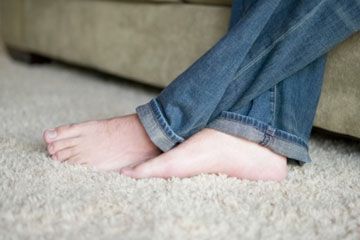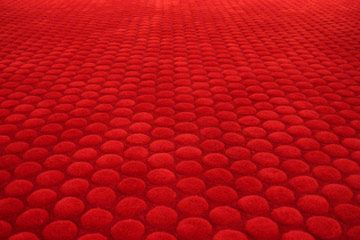Out of sight, out of mind, the saying goes. Maybe that's why the choice of a carpet pad -- aka underlay or cushion -- is often overlooked. Yet the right pad can make or break a carpet purchase because it plays a critical role in your carpet's performance and appearance.
Your carpet pad is a sheet of spongy material that goes underneath your carpet. It's cut slightly smaller than the carpet itself so it will fit inside the tack strip that keeps the carpet in place. Installers either staple or glue the pad to the subfloor, joining sections of padding with a specialized tape.
Advertisement
The main purpose of a carpet pad is to protect your carpet. The pad keeps the underside of your carpet from wearing against the bare floor. It also absorbs the impact from footsteps and furniture, lessening the stress on the carpet. In one study, carpets without cushioning lose, on average, 19 percent of their pile height from wear compared to a five to 10 percent loss for the same carpet with a separate pad [source: Carpet Cushion Council Benefits].
The carpet pad serves a variety of additional purposes:
- It creates a softer "walk" or feel to the carpet. Many homeowners think this is the whole point of a pad, but it's not. In fact, the best pad for a particular carpet may provide less foot comfort than an inferior one.
- A pad makes cleaning your carpet more efficient. When you have padding, your vacuum cleaner can raise the carpet slightly and remove more dirt, which helps reduce allergic reactions.
- It provides thermal insulation. A pad stops the drafts that can seep through some porous carpeting. Padding has higher R-value -- which measures a material's ability to keep heat from passing through it -- than carpet, keeping the room warmer.
- Carpet padding dampens sound. This is especially important for upstairs rooms, but even in a basement, a pad reduces sound more than a carpet alone.
Installing the wrong pad can sometimes void your carpet's warranty, so always look at the carpet manufacturer's recommendations. And think twice about the free pad offered by carpet retailers: Some retailers order padding by the truckload and push only one kind [source: Long's Carpet]. Decide on the pad you want and ask the store to order it if they don't have it in stock. If you're replacing carpet, don't be tempted to save by using the existing pad. It almost always needs to be replaced.
Before choosing your carpet pad, you should look at where you'll use it. Think about what kind of activities or traffic the room sees, and choose a pad that can take a beating if you think you'll be rough on it. If you stand a lot or have kids who will play there, consider thicker padding for increased comfort. Does someone in your home use a wheelchair? They don't roll well on soft padding, so take that into account, too. Regardless of everything else, when choosing your carpet pad, it all comes down to your particular needs, so don't let a salesperson who's more interested in installing the most expensive product sway you.
Read on to learn about a pad that uses air to cushion your carpet.
Advertisement



